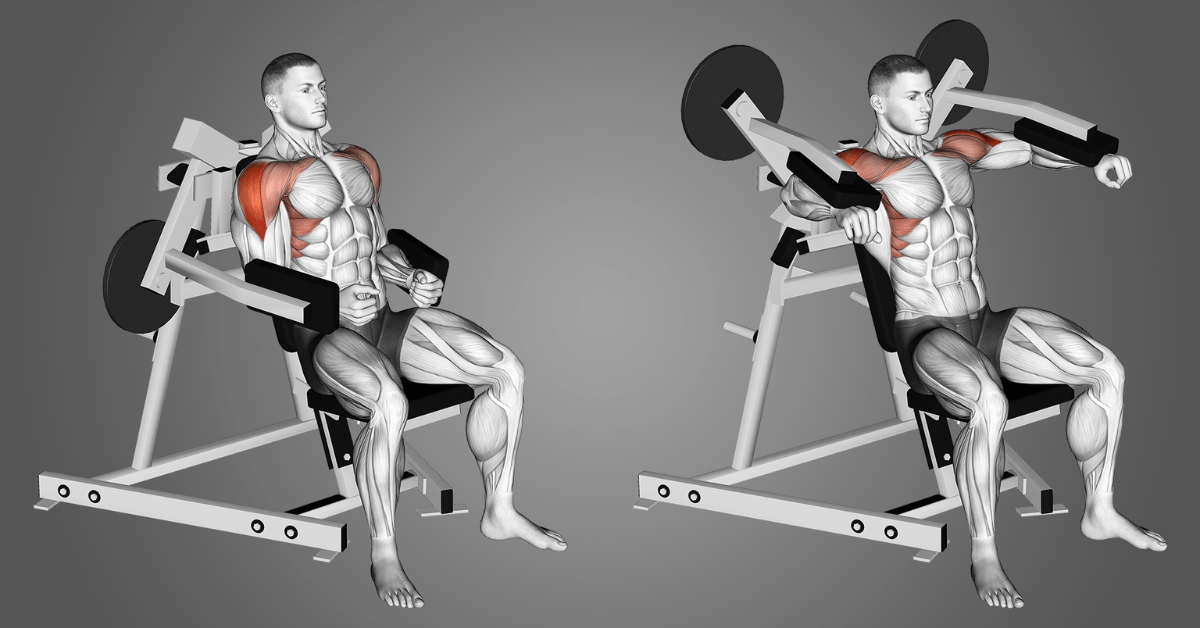Pullover machines have become a critical piece of equipment in gyms, rehabilitation centers, and even specialized training facilities. Designed to target multiple upper-body muscle groups in a single movement, the pullover machine offers a controlled and safe environment for strength training. For anyone wondering what it does, how it works, and why it matters, this guide will answer your questions directly. A pullover machine primarily facilitates a motion where you bring a loaded bar or lever from above your head down toward your torso, engaging the chest, lats, triceps, and core. This controlled path reduces the risk of injury compared to free weights, making it a valuable tool for both beginners and seasoned athletes. In recent years, advances in biomechanics and machine engineering have improved comfort, adjustability, and efficiency, allowing users to achieve targeted muscle activation with precision. Whether your goal is bodybuilding, injury rehabilitation, or general fitness, understanding the pullover machine’s mechanics and benefits is essential to making the most of your training sessions.
Understanding the Pullover Machine
A pullover machine is a strength-training apparatus designed to simulate the classic dumbbell pullover but with guided motion and adjustable resistance. The machine consists of a seat, a backrest, a lever or bar connected to a weight stack or plate-loading system, and an adjustable pivot that aligns with the user’s shoulder joint. By eliminating the instability of free weights, the machine ensures that the user can focus purely on muscle contraction without worrying about balance. Its motion path typically begins with the arms extended above the head, then moves in a smooth arc until the hands are positioned near the chest. This design allows for continuous tension throughout the range of motion, optimizing muscle recruitment. Unlike free-weight pullovers, which require significant core stability, the pullover machine supports the torso, reducing spinal strain and making it accessible for users recovering from injuries. This innovation has made it a staple in both commercial and home gyms.
Historical Development and Evolution
The pullover machine traces its origins to mid-20th-century fitness innovation, particularly during the golden age of bodybuilding. Early designs were often rudimentary, with minimal adjustability and limited ergonomics. Athletes like Arnold Schwarzenegger popularized the pullover as an exercise, often using free weights, which led to increased demand for safer, more controlled alternatives. Manufacturers responded by creating machines that mimicked the movement pattern but provided guided motion. Over the decades, engineering improvements have led to smoother resistance curves, better biomechanical alignment, and enhanced comfort through adjustable seating and padding. Modern designs also incorporate counterbalance systems to make the starting position less demanding, allowing users of varying strength levels to perform the exercise effectively. The evolution reflects a broader trend in fitness equipment development—balancing safety, performance, and user experience.
Anatomy and Muscle Engagement
One of the most appealing aspects of the pullover machine is its ability to target multiple muscle groups in a single exercise. The primary movers are the latissimus dorsi (lats) and pectoralis major (chest), but secondary muscles such as the triceps brachii, serratus anterior, and posterior deltoids also play significant roles. Additionally, the pullover movement engages stabilizing muscles in the core and shoulders, providing a holistic upper-body workout. The fixed motion path ensures that these muscles are consistently activated throughout the range of motion, unlike free weights where momentum can sometimes reduce muscle tension. This makes the pullover machine particularly effective for building muscle mass, improving posture, and enhancing athletic performance. Furthermore, because it works both pushing and pulling muscle chains in a unique hybrid motion, it can bridge gaps in traditional split training programs.
Benefits of Using a Pullover Machine
The pullover machine offers several advantages over other upper-body exercises. Its guided motion reduces the risk of improper form, making it beginner-friendly. For advanced lifters, it provides an opportunity to isolate and overload specific muscles without taxing stabilizers excessively. It’s also joint-friendly, as the smooth arc of motion minimizes shoulder impingement risk. Rehabilitation specialists often recommend it for patients recovering from shoulder or chest injuries, as it allows controlled strengthening without unpredictable forces. Additionally, the pullover machine can improve range of motion in the shoulders, which benefits functional activities like swimming, climbing, or even carrying objects overhead. From an efficiency standpoint, it combines elements of a chest press and lat pulldown in one movement, saving time for those with limited workout schedules.
Table 1: Key Benefits of Pullover Machine Training
| Benefit | Description |
|---|---|
| Muscle Isolation | Targets chest, lats, and triceps effectively |
| Safety | Guided path reduces injury risk |
| Joint-Friendly | Smooth motion prevents impingement |
| Versatility | Useful for both bodybuilding and rehab |
| Time Efficiency | Works multiple muscle groups in one movement |
Types of Pullover Machines
Pullover machines come in several variations, each offering distinct features suited for different training needs. The most common is the selectorized weight stack version, where resistance is adjusted via a pin in a weight stack. This type is common in commercial gyms for its convenience. Another variant is the plate-loaded pullover machine, which uses standard weight plates and often provides a more “free-weight-like” feel with smoother resistance curves. There are also dual-function machines that combine the pullover with other exercises, such as a lat pulldown or triceps press. Finally, compact home-gym versions exist, offering lighter resistance and smaller footprints for personal training spaces. The choice depends on factors such as space availability, budget, and training goals.
Table 2: Common Types of Pullover Machines
| Type | Features | Best For |
|---|---|---|
| Selectorized Stack | Adjustable pin-loaded weights | Commercial gyms, beginners |
| Plate-Loaded | Uses weight plates, natural resistance curve | Strength athletes, advanced lifters |
| Dual-Function | Combines multiple exercises in one machine | Space-saving gyms |
| Compact Home Model | Lightweight, portable, smaller range | Home gyms, casual users |
Proper Technique and Form
Using the pullover machine effectively requires attention to form. Begin by adjusting the seat height so that your shoulders align with the machine’s pivot point. Secure your torso against the backrest and grip the lever or bar overhead. Engage your core, then smoothly pull the bar downward in an arc toward your chest, maintaining controlled movement throughout. Avoid jerking or using momentum, as this reduces muscle activation and increases injury risk. At the bottom of the movement, pause briefly to maximize muscle contraction before returning to the starting position. Breathing technique is also important—exhale during the pulling phase and inhale as you return to the start. For best results, use a moderate weight that allows you to complete 8–12 repetitions with good form. Over time, gradually increase resistance to promote progressive overload and muscle growth.
Common Mistakes to Avoid
Even with a guided motion, certain errors can compromise the effectiveness of the pullover machine. One common mistake is using excessive weight, which can strain the shoulders and reduce range of motion. Another is arching the lower back excessively, which shifts tension away from target muscles and risks lumbar injury. Some users rush through the movement, relying on momentum rather than muscle contraction, which diminishes training benefits. Neglecting to adjust the seat and backrest properly can also result in poor alignment, leading to discomfort or ineffective training. Finally, failing to control the return phase wastes an opportunity for eccentric muscle engagement, which is crucial for strength and hypertrophy. Being mindful of these pitfalls ensures you get the most out of each session while minimizing injury risk.
Maintenance and Longevity of Equipment
For gyms and individuals who own pullover machines, regular maintenance is essential to ensure safety and longevity. This involves cleaning upholstery and handles regularly, lubricating moving parts to maintain smooth motion, and checking cables or pivot points for wear. Weight stacks should be inspected for cracks or damage, and selector pins should be replaced if they become bent or loose. Plate-loaded machines require inspection of loading pegs and securing bolts to prevent accidents. Keeping the machine well-maintained not only extends its life but also ensures that it continues to provide consistent resistance and performance. Neglecting upkeep can lead to uneven motion, increased injury risk, and costly repairs. Many commercial gyms schedule quarterly professional servicing, which is a good practice for heavy-use environments.
Biomechanics and Range of Motion
The pullover machine operates on a biomechanical principle known as the shoulder extension arc. This motion begins with the arms in a fully flexed position above the head and moves them downward toward the hips while the elbows remain slightly bent. The path of movement closely mirrors the natural shoulder joint motion, making it ergonomic and joint-friendly. The fixed pivot point ensures that the user’s shoulders remain aligned with the machine’s axis, preventing excessive rotational stress. Unlike free-weight pullovers, where the resistance curve changes significantly due to gravity, the pullover machine maintains consistent tension throughout the movement. This is because the resistance comes from a cable or lever arm connected to a weight source, ensuring that the muscles remain engaged in both concentric (pulling down) and eccentric (returning) phases. This controlled tension is particularly beneficial for building strength in the lats and chest while preserving shoulder health.
Pullover Machine vs. Free Weight Pullovers
The free-weight pullover—traditionally performed with a dumbbell—remains a favorite for many strength athletes due to its natural feel and compound engagement. However, the pullover machine offers unique advantages that make it a preferred choice in various training environments. First, the machine eliminates the instability factor, allowing lifters to focus solely on muscle contraction without needing to stabilize the weight overhead. Second, it provides a safer starting position, as the weight is already supported by the machine rather than being hoisted into place. Third, the machine allows precise load adjustments, which is especially valuable for progressive overload. On the other hand, free weights may offer a slightly greater range of motion and can activate stabilizing muscles more intensively. Many experienced lifters incorporate both into their routines, using the machine for controlled hypertrophy work and free weights for functional stability training.
Advanced Training Techniques
The pullover machine can be incorporated into a variety of advanced training methods to maximize results. One approach is the rest-pause technique, where you perform a set to near failure, rest for 10–15 seconds, and then continue for additional reps. This helps recruit more muscle fibers and enhance endurance. Another method is drop sets, where you reduce the weight after reaching failure and continue without rest to extend the set’s duration. Tempo training is also highly effective—slowing down the eccentric phase to three or four seconds increases time under tension, promoting hypertrophy. For strength athletes, partial reps in the strongest range of motion can allow for heavier loading, improving overall power output. Combining these techniques strategically can accelerate progress, but they should be used sparingly to avoid overtraining.
Pullover Machines in Rehabilitation
Rehabilitation professionals often recommend pullover machines for patients recovering from shoulder surgeries, rotator cuff injuries, or pectoral strains. The guided motion allows for controlled range of movement, which is crucial when reintroducing load to healing tissues. Adjustable resistance makes it possible to start with extremely light loads, gradually increasing as strength and mobility improve. Because the backrest supports the torso, there’s minimal strain on the spine, making it suitable for individuals with lower-back issues. Moreover, the motion itself can help restore functional movement patterns used in daily activities like reaching overhead or lifting objects. Physical therapists may also use the machine to isolate and strengthen weaker muscles, helping to correct imbalances that could otherwise lead to recurring injuries.
Choosing the Right Pullover Machine
When selecting a pullover machine, there are several factors to consider. Ergonomics are critical—the seat height, backrest angle, and handle positions should be adjustable to fit different body types. Smooth resistance is another key factor; machines with high-quality bearings and precision engineering provide a better training experience. Space and footprint matter for both home and commercial gyms; some models are compact, while others require significant floor area. Weight capacity should match the user’s training goals, ensuring there’s enough resistance for progressive overload. Build quality—including frame stability and padding durability—determines longevity. Lastly, consider whether a selectorized or plate-loaded model suits your training style. Many users find selectorized machines more convenient for quick adjustments, while plate-loaded models often offer a more natural resistance feel.
Pullover Machine Safety Guidelines
Even though the pullover machine is generally safe, proper usage is essential to prevent injury. Always begin with a warm-up to prepare the muscles and joints for the exercise. Ensure that your seat and backrest are adjusted so that your shoulders align with the pivot point. Avoid locking your elbows during the movement to reduce joint stress. Maintain a neutral spine against the backrest throughout the exercise—arching excessively can cause lower-back strain. Use a controlled tempo rather than jerking the weight, as rapid movements increase injury risk. If you experience any sharp pain in the shoulders, chest, or back, stop immediately and reassess your form. For new users, it’s wise to start with lighter weights to learn the correct technique before progressing to heavier loads.
Pullover Machines in Sports Training
Athletes in sports like swimming, rowing, and rock climbing often use pullover machines to develop power and endurance in the lats and chest. In swimming, the pullover motion closely mimics the pulling phase of a freestyle stroke, enhancing performance in the water. Rowers benefit from the strengthened pulling muscles, which contribute to more powerful strokes. Climbers use it to improve overhead pulling strength, aiding in grip-intensive ascents. Even throwers in track and field can gain from the machine’s ability to strengthen muscles involved in the acceleration phase of a throw. For athletes, the pullover machine becomes a sport-specific conditioning tool that improves both strength and movement efficiency.
Pullover Machines in Home Gyms
The rise of home fitness has led to increased interest in compact pullover machines. While traditional commercial models can be large and heavy, manufacturers now produce scaled-down versions suitable for home use. These often have lighter weight stacks or plate-loading systems to save space and cost. For serious home gym owners, a pullover machine can add significant versatility, replacing multiple upper-body exercises with one efficient movement. Many home users pair their pullover machine with other multi-functional equipment, such as cable stations or adjustable benches, to create a comprehensive workout space. Investing in a quality home model ensures that you can perform this powerful exercise without relying on gym access.
Cost Considerations and Budgeting
Pullover machines vary widely in price depending on brand, build quality, and features. Entry-level home models may start around a few hundred dollars, while commercial-grade machines can exceed several thousand. Plate-loaded models often cost less than selectorized ones but may require additional investment in weight plates. When budgeting, consider not just the purchase price but also long-term maintenance costs and potential resale value. High-quality machines from reputable brands tend to retain more value and require fewer repairs. For gym owners, the pullover machine is an investment that can attract members looking for variety in their workouts, potentially offsetting the cost through increased membership retention.
The Future of Pullover Machine Technology
Like many areas of fitness equipment, pullover machines are evolving with advances in technology. Some modern models integrate digital resistance tracking, allowing users to monitor performance metrics such as force output, speed, and time under tension. Others incorporate smart resistance systems that adjust load dynamically based on user strength throughout the movement. Ergonomic innovations continue, with better padding, adjustable grips, and customizable motion ranges to suit individual needs. In the future, we may see pullover machines integrated into connected fitness ecosystems, enabling remote coaching and performance analytics. This evolution reflects a broader trend in the industry toward personalization and data-driven training.
Testimonials from Real-World Users
Many users praise the pullover machine for its ability to target hard-to-reach muscle areas. One long-time bodybuilder notes, “It’s the perfect blend of chest and back work. I can push heavy without worrying about stabilizing the weight overhead.” A rehabilitation patient shared, “The pullover machine helped me rebuild shoulder strength after surgery, and I felt safe the entire time.” Even casual gym-goers appreciate its simplicity, with one member saying, “I never thought an exercise could hit my lats and chest this effectively in one move.” These testimonials reflect the machine’s versatility and broad appeal across different fitness levels and goals.
Integrating the Pullover Machine into a Routine
For optimal results, the pullover machine should be integrated thoughtfully into your workout program. It can serve as a primary movement in upper-body days, complementing pressing and pulling exercises. For bodybuilders, it can be positioned early in the workout to maximize performance while fresh, or later to pre-exhaust targeted muscles before compound lifts. In circuit training, it works well between pushing and pulling movements to balance muscle engagement. For rehabilitation, it may be used at lower intensities as part of a progressive strengthening plan. Whether your goal is muscle growth, endurance, or recovery, consistent use and progressive overload are the keys to long-term benefit.
Final Thoughts and Conclusion
The pullover machine stands as one of the most efficient, versatile, and joint-friendly pieces of strength-training equipment available. Its ability to work both the pushing and pulling chains in a single motion sets it apart from most other machines. The guided arc ensures safety and consistency, while adjustable resistance and ergonomic design make it accessible to a wide range of users—from beginners to elite athletes. It serves multiple roles: a muscle-building powerhouse, a rehabilitation tool, and a sport-specific conditioner. As technology advances, pullover machines are becoming even more adaptable, precise, and user-friendly. Whether in a commercial gym or a home setup, investing in a quality pullover machine can yield significant returns in strength, mobility, and overall fitness performance. Ultimately, this machine’s staying power in the fitness industry is a testament to its effectiveness. As one veteran coach summed it up, “If you had to choose one machine to build both chest and back strength safely, the pullover would be it.”
FAQs
1. What muscles does the pullover machine target most effectively?
The pullover machine primarily engages the latissimus dorsi (lats) and pectoralis major (chest), while also involving the triceps, serratus anterior, and core stabilizers. This combination makes it unique because it works both pushing and pulling muscle chains in a single movement.
2. Is the pullover machine suitable for beginners?
Yes. The guided motion, adjustable resistance, and ergonomic support make it beginner-friendly. New users can start with light weights to learn the motion safely before progressing to heavier loads.
3. Can I replace free-weight pullovers with the pullover machine?
While the machine provides a safer and more controlled alternative, free weights still offer benefits in stability and functional strength. Many athletes use both to maximize results.
4. How often should I use the pullover machine in my routine?
Two to three times per week is sufficient for most people, allowing enough recovery time for the chest, back, and supporting muscles to adapt and grow.
5. Is the pullover machine useful for rehabilitation?
Yes. Physical therapists often use it for shoulder and chest rehabilitation because it allows controlled movement, adjustable load, and minimal strain on injured tissues.











